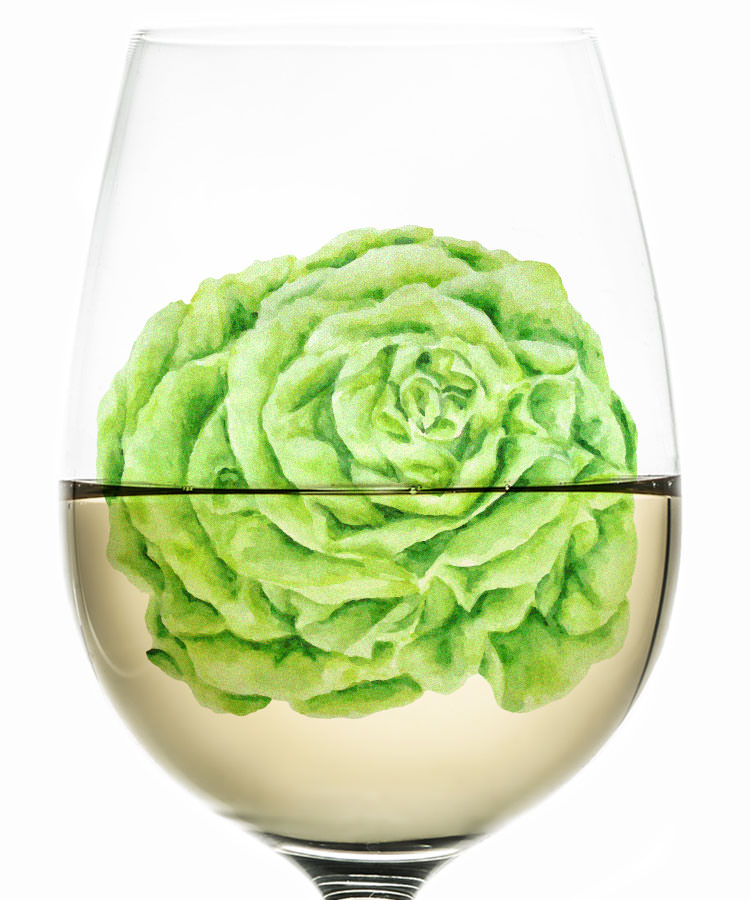If you nose a wine and get a distinctive whiff of salad, don’t be alarmed. A green, vegetal aroma that presents itself as bell pepper, jalapeño, or grass is characteristic of some of the world’s most famous wine varieties. These aromas can be fresh, spicy, overripe, or stinky, depending on how the wine is made. They’re called pyrazines and, once you identify them, you can tell a lot about what’s in your glass.
Short for alkyl-methoxypyrazines, pyrazines are chemical compounds that create these powerful green, vegetal odors. While peppers are the most common aromas associated with pyrazines, others that might indicate the compound’s presence are spicy or sweet herbs, plant stems, asparagus, snap pea, or even just rustic earth.
One reason pyrazines are so much more noticeable than other aromatic wine compounds is that they have a very low detection threshold, meaning that a wine drinker can easily smell them. That’s why when a pyrazine-heavy wine (more on those later) is in a glass, someone across the room might be able to detect the aromas of grass and green pepper.
Before ripening on the vine, all vitis vinifera varieties have some measurable level of pyrazines, but these levels decrease as the grapes ripen. Therefore, there are only a few varieties that actually contain detectable amounts of pyrazines at the time of harvest, and they are all members of the notable Bordeaux family of grapes: Cabernet Sauvignon, Cabernet Franc, Carménère, Merlot, Malbec, and Sauvignon Blanc. Of the red varieties, in general, Carménère and Cabernet Franc have the most pyrazines, followed by Cabernet Sauvignon and Merlot, with Malbec being the lowest.
It’s handy to understand pyrazines for two reasons. First of all, these compounds are incredibly important for blind tasters because if pyrazines are detectable in a wine, there are only a few possible grapes that could be in the glass, narrowing down the options significantly. Secondly, pyrazines can be incredibly polarizing. Whether managed well by a winemaker or handled poorly (sometimes pyrazines can be downright unpleasant by any standard, giving off stinky, rotten asparagus aromas), they are usually quite noticeable. Thus, if you know you love the peppery notes of Cabernet Franc, perhaps Carménère is one to try.
